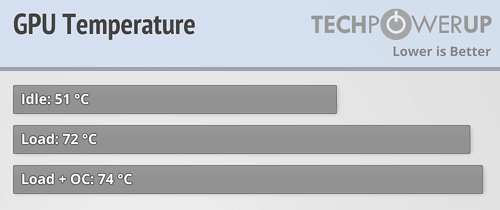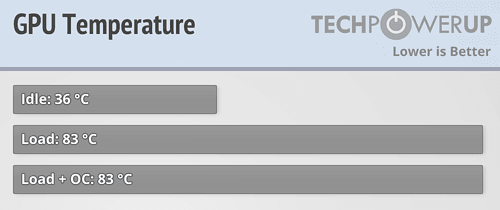The EVGA GTX 1080 Hybrid features a base clock rate of 1,721MHz with a boost rating of 1,860MHz, which are the same clock rates of the Classified and FTW edition cards. Its 10+2 power phase system isn’t as robust as the Classified edition (which has 14+3 phases), but it should allow for some respectable overclocking headroom.
If the cooling was improving something, we shouldn't be seeing the same clock rates. If it did, why isn't EVGA (or anyone else) putting it's proverbial "money where it's mouth is" and guaranteeing higher clocks. Fact is, unless the card is thermal throttling, water cooling brings nothing to the table. Have yet to see a 10xx series AIB card throttle.... or 9xx AIB for that matter. I have twin 780s (Asus DCII) in a custom loop (39C GPU temp under Furmark) but have gotten higher stable OCs on two subsequent air cooled builds w/ 780s. To my eyes adding some stronger links to a chain doesn't make the chain stronger unless you upgrade all the links ... and they haven't done that here. The weakest link will limit performance and while the hardware would I'm sure "go higher", the BIOS GPU limitations remain the performance limiter. With no BIOS editor available to take advantage of better componentry, those limitations remain in place.
Your typical CLC doesn't cool the VRM any better (sometimes worse) so without that, you normally wouldn't expect get the WC benefit of being able to increase voltage. However, now with pascal, the VRM doesn't control the voltage limitation, the GPU does. The Classy, and other cards like it, were the choice of OC enthusiasts looking to set records with LN2, but now the huge performance increases of yesteryear even with LN2 are no longer being realized.
The referenced article says that the memory plate touches the GPU plate.... not going to be a lot of heat transfer from an "edge touch" but again, we now hit a performance wall that is set by the GPU not the VRM. Previously we could increase voltage by using a hacked BIOS but last time I looked, no one had cracked the 10xx BIOS (See Post 599 at link below).
http://www.overclock.net/t/1601329/gtx-1070-1080-titan-x-2nd-gen-bios-who-has-it/590#post_25421208
And while we still see an advantage to a better PCB and cooling than offered on the reference cards, we are not seeing the benefit from the Classified, Matrix, Lightning, HOF series cards that we saw years ago. With "Project Greenlight" back in 2012 (see link below), nVidia started clamping down with each series as far as what we can do voltage wise. Unless the card comes with a higher voltage adjustment limit and / or a binned GPU, you are not going to get more performance. Of course performance / stability can vary depending on how lucky you are in the silicon lottery. However, if thermal throttling kicks in at 82C, cooling your GPU down from the air cooled 74C .... to 50C with a CLC .... or 35C with a custom loop isn't going to get more performance.
http://www.guru3d.com/news-story/nvidia-green-light-program-requires-board-partners-to-validate-their-designs.html
http://www.hardwareasylum.com/reviews/video/evga_gtx1080_classified/page14.aspx
As it says in the 2nd link .... AIB partners have "lost the battle" with nVidia. They go thru the history of what was able to be accomplished overclocking wise with regard to OC'ing with the Classy but note that card makers are now so limited with regard with what they can do with a card to increase performance, both legally and physically, that there is little that partners can do.
Yes, nVidia lets the partners differentiate themselves by releasing reference cards that throttle out of the box and then AIB guys can push there "look at me, we don't throttle" cards ... but with each generation, these gains get smaller. And the way boost works, you can still get fairly decent average fps numbers, even tho the card is stuttering and min fps on the AIBs will be 15% higher. However, most buyers don't look behind the average fps rankings. On the super cards (Matrix, Classy, Lightning, etc), we see higher base clocks.... but manually OC a decent AIB cards and it runs neck and neck with the 10xx series super cards.
Spending the extra $10-20 for an AIB card is, to my eyes, certainly worth it for the better cooling (not just GPU but also memory and VRM), lack of throttling and stronger componentry ... but spending an extra $100 for a Classy or water cooling just isn't bringing a worthwhile ROI .... if higher fps is the measuring stick. Of course if you want a dead silent box on your desk, a custom loop will satisfy that goal and I can't argue against that if user is big on quiet.
I still do it (custom loops, not CLCs) for my own builds (and for those that request it for similar reasons ) as a well designed custom loop will reduce noise significantly, but water cooling will not help a card that is not throttling (i.e. 82C on 1070 / 1080).... and most AIB cards are not throttling on air:
Orange Line - Air cooled Reference Card, throttling evident, lots of stuttering and drops in GPU frequency (low - 1680)
Blue Line - Air cooled AIB card (MSI 1080 Gaming X) no stuttering, GPU frequency a rock solid 1910
If image not showing look here
http://videocardz.com/60838/msi-geforce-gtx-1080-gaming-x-is-much-better-than-founders-edition
We can see why, looking at the temps ... 1st graph is for the same AIB in the throttling graphic where card reached 74C at max OC.... 8C of headroom before throttling will occur at default fan speed. In the 2nd graph for the reference card, the card is already throttling even without being OC'd.
Both new Hybrid cards are fed with two 8-pin (or 6+2-pin) connectors and feature a TDP of 215W.
Another upgrade that doesn't really bring anything to the table.
PCI-E Slot (75) + 8 pin (150) provides 225 watts ...
PCI-E Slot (75) + 8 pin (150) + 6 pin (75) provides 300 watts ...
The extra 75 watts from the 2nd 8 pin is NOT bringing anything to the table.





